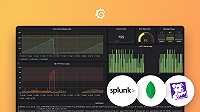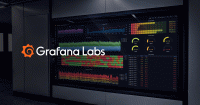Sift analysis - Kube crashes
This analysis finds pods in the specified namespace (and optionally cluster) that have crashed during the investigation time range, either due to an application error or an OOMKill.
Inputs
Required:
namespacein Prometheus datasource, andnamespacein Loki datasource
Optional:
cluster(to narrow down the scope to a single cluster)
How it works
Step 1: Find crashing pods and their workloads
Find crashing containers and their associated workloads in the specified namespace and (optionally) cluster using metrics from kube-state-metrics.
Step 2: Sorts results
We split the crashes into two groups, those caused by OOMKills and those caused by crashes (using the reason label).
Step 3: Define events
We create an event for each crash.
Step 4: Locate reasons for crashes
We find the reason for each crash by interpolating the following query template with a filter for namespace/cluster/pod and searching the discovered Loki datasource for logs:
%s |~`(?i)(panic:|traceback |error:|fatal)` !~`(?i)(info|debug)`This step is currently optional, and does not always run for every analysis.
What resources does this analysis use?
- Prometheus datasource - Range query
- Loki datasource - Logs range query
How does this analysis determine when a result is interesting?
- The results are interesting if we locate one or more crashes.
What configurations options are available for this analysis?
This check has no configurable parameters except for the Prometheus and Loki datasources.



